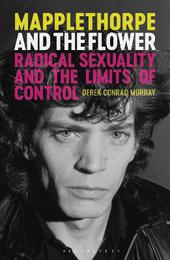
|
Mapplethorpe and the Flower: Radical Sexuality and the Limits of Control
Hardback
Main Details
| Title |
Mapplethorpe and the Flower: Radical Sexuality and the Limits of Control
|
| Authors and Contributors |
By (author) Derek Conrad Murray
|
| Series | International Library of Modern and Contemporary Art |
|---|
| Physical Properties |
| Format:Hardback | | Pages:224 | | Dimensions(mm): Height 234,Width 156 |
|
| Category/Genre | Art History
Individual photographers |
|---|
| ISBN/Barcode |
9781788312516
|
| Classifications | Dewey:779.34092 |
|---|
| Audience | | Postgraduate, Research & Scholarly | |
|---|
| Illustrations |
50 black and white illustrations
|
|
Publishing Details |
| Publisher |
Bloomsbury Publishing PLC
|
| Imprint |
I.B. Tauris
|
| Publication Date |
30 June 2018 |
| Publication Country |
United Kingdom
|
Description
Mapplethorpe and the Flower: Radical Sexuality and the Limits of Control is the first dedicated book-length critical study of the late artist Robert Mapplethorpe's flower photographs. The book is an interdisciplinary investigation into the symbolism of the flower as envisioned by a photographer whose production was mired in controversy - triggered in large part by his thematic exploration of radical sexuality and queer subcultural life. Mapplethorpe came into international prominence due to the public response to his polarizing retrospective exhibition, The Perfect Moment (1989-1990), a ground breaking collection of images exploring three largely traditional genres of photography: the still life, the portrait, and the human figure. If there is one characteristic that unifies the artist's approach to these genres, however, it is his meticulous attention to the materiality of the photograph as object. Mapplethorpe was a dedicated formalist, committed to locating what is most beautiful about his chosen subject-producing work under carefully controlled studio conditions that enabled the development of a unique and singular aesthetic vision. Bearing this in mind, Mapplethorpe and the Flower is dedicated to unpacking how the artist's unique brand of formal sophistication and discipline, combined with his conceptual bravado, interpenetrates all of his photographs - and reaches its formal and conceptual maturation in his flower images. There has been significant critical attention paid to the artist's more notorious photographs, namely the S&M imagery, and his now infamous persona as provocateur and sexual renegade. Fixation on this dimension of the artist's mythology overshadows the formal details and interlocking representational and political commitments crosscutting the artist's oeuvre. Mapplethorpe and the Flower is a recuperative effort: one that seeks to locate persistent threads running through the artist's seemingly disparate aesthetic and conceptual investigations.
Author Biography
Derek Conrad Murray is Associate Professor of the History of Art and Visual Culture at the University of California, Santa Cruz, USA. He has contributed to leading magazines and journals of contemporary art and visual culture, including American Art, Art in America, Art Journal, Third Text, and Nka: Journal of Contemporary African Art, where he currently serves as associate editor.
ReviewsMapplethorpe and the Flower [reveals] rich and necessary reflections. * Revue Critique d'Art (Bloomsbury Translation) * It has been almost four decades since Kobena Mercer's groundbreaking articles dealing with issues of blackness in Mapplethorpe's photographs of black male bodies. Murray takes up where Mercer left off and significantly expands the conversation by powerfully arguing that Mapplethorpe's flower works are not as distinct from those dealing explicitly with the body and issues of difference (racial and sexual). Indeed, he argues this divide has been partly brought about art historical methodologies that effectively cleave issues of form from issues of difference and vice versa. Through clear, cogent prose, Murray will leave readers stunned at what's possible through his reimagination of art historical methodology: in this brilliant book, he powerfully outlines how issues of power and repression manifest themselves across the spectrum of Mapplethorpe's body of work. I'll never look at one of Mapplethorpe's flower works the same way! * Alpesh Patel, Associate Professor of Art History, Tyler School of Art, Temple University, USA *
|